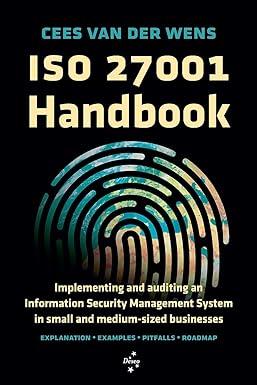Question
Consider a manufacturer that makes a certain product. Variable manufacturing overhead and fixed manufacturing overhead are allocated to each unit made based on budgeted direct
Consider a manufacturer that makes a certain product. Variable manufacturing overhead and fixed manufacturing overhead are allocated to each unit made based on budgeted direct labour-hours. The following are the production data. (There were no beginning or ending inventories.)
| Budgeted variable overhead rate per DLH | $ | 12 | |
| Budgeted DLHs per unit | 4 | ||
| Data for May are as follows: | |||
| Budgeted production volume | 1,000 | units | |
| Actual direct labour-hours | 4,540 | DLHs | |
| Actual variable overhead costs | $ | 52,200 | |
| Actual production volume | 1,100 | units | |
| Budgeted fixed overhead costs | $ | 60,000 | |
| Actual fixed overhead costs | $ | 63,000 | |
Required:
1-a. Calculate the direct labour-hours management will have expected to incur in light of the production volume achieved.
1-b. Which amount is relevant for determining labour efficiency variance?
2. Calculate all the variable overhead variances. (Indicate the effect of each variance by selecting "F" for favourable, "U" for unfavourable, and "None" for no effect (i.e., zero variance).)
3. Calculate all the fixed overhead variances. (Indicate the effect of each variance by selecting "F" for favourable, "U" for unfavourable, and "None" for no effect (i.e., zero variance).)
Explanation
1.
The SQI is 4 hrs/unit 1,100 units made = 4,400 hours allowed for the production of the 1,100 units. 4,000 hours on the other hand is the allowed labour for the budgeted volume of 1,000 units. This amount of labour hours is not relevant to determine the efficiency of labour use over the reporting interval because the actual volume is different: 1,100 units were made. As is evident, the standards allow for 4,400 hours. Thus if in fact 4,400 hours was used and is compared to the 4,000 hours in the (static) budget the differential addition of 400 more hours is not an indication of inefficiency.
2. Variable overhead variances:
| Actual Hours of Input, at the Actual Rate | Actual Hours of Input, at the Standard Rate | Standard Hours Allowed for Output, at the Standard Rate | ||
| (AH AR) | (AH SR) | (SH SR) | ||
| 4,540 hours $11.50 per hr** | 4,540 hours $12.00 per hour | 4,400 hours* $12.00 per hour | ||
| $52,200 | = $54,480 | = $52,800 |
| Variable overhead rate variance, $2,280 F | Variable overhead efficiency variance, $1,680 U | ||
| Total variable overhead variance, $600 F | |||
| *Actual output | 1,100 | ||
| Standard input quantity | 4.0000 | ||
| = Standard qty of input allowed | 4,400 | ||
**The actual hourly rate is imputed from actual hours and actual labour cost.
3.
Fixed overhead variances
The predetermined overhead rate is Budgeted cost/Budgeted volume = $60,000/4,000 = $15 per DLH.
The standard number of hours allowed for the actual output volume of 1,100 units is 4 dlh 1,100 = 4,400 hours.
Actual fixed overhead cost = $63,000
Budgeted overhead cost = $60,000
Applied overhead = $15 4,400 hours = $66,000
The budget variance is $3,000 U. We overspent by $3,000.
The volume variance is $6,000 F. We over applied by $6,000.
Step by Step Solution
There are 3 Steps involved in it
Step: 1

Get Instant Access to Expert-Tailored Solutions
See step-by-step solutions with expert insights and AI powered tools for academic success
Step: 2

Step: 3

Ace Your Homework with AI
Get the answers you need in no time with our AI-driven, step-by-step assistance
Get Started


